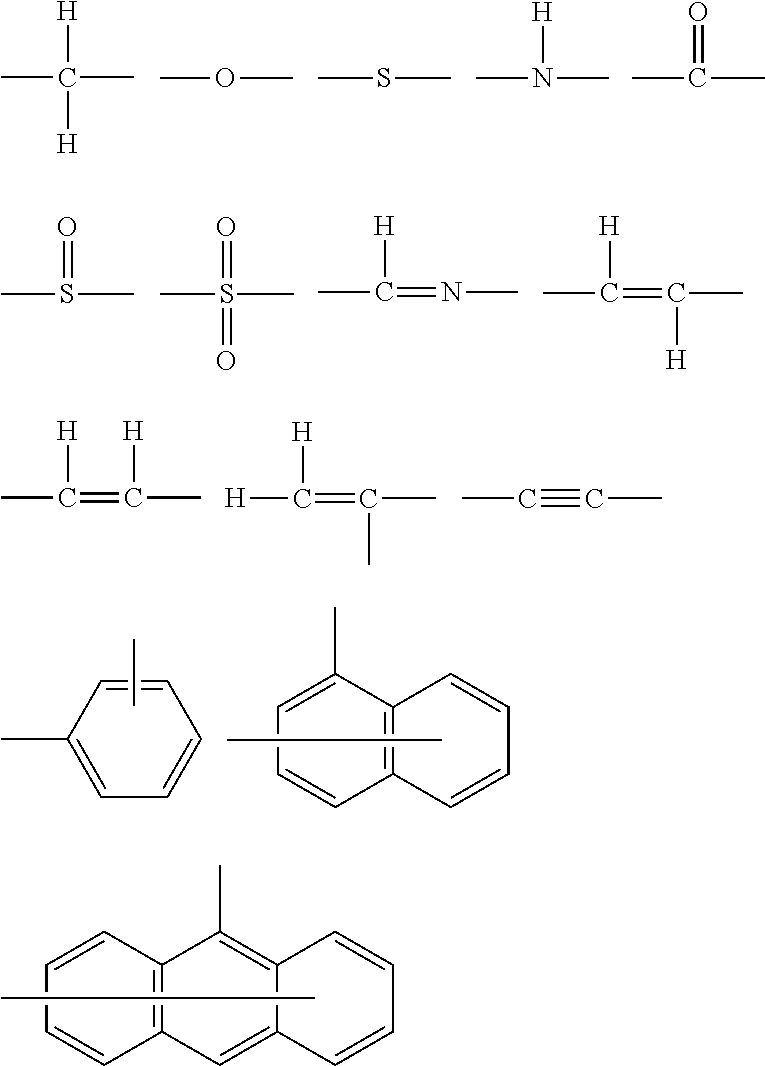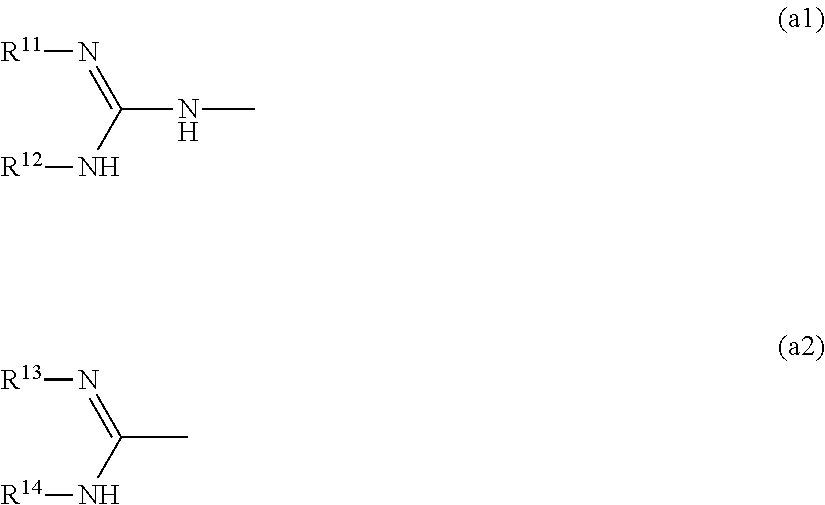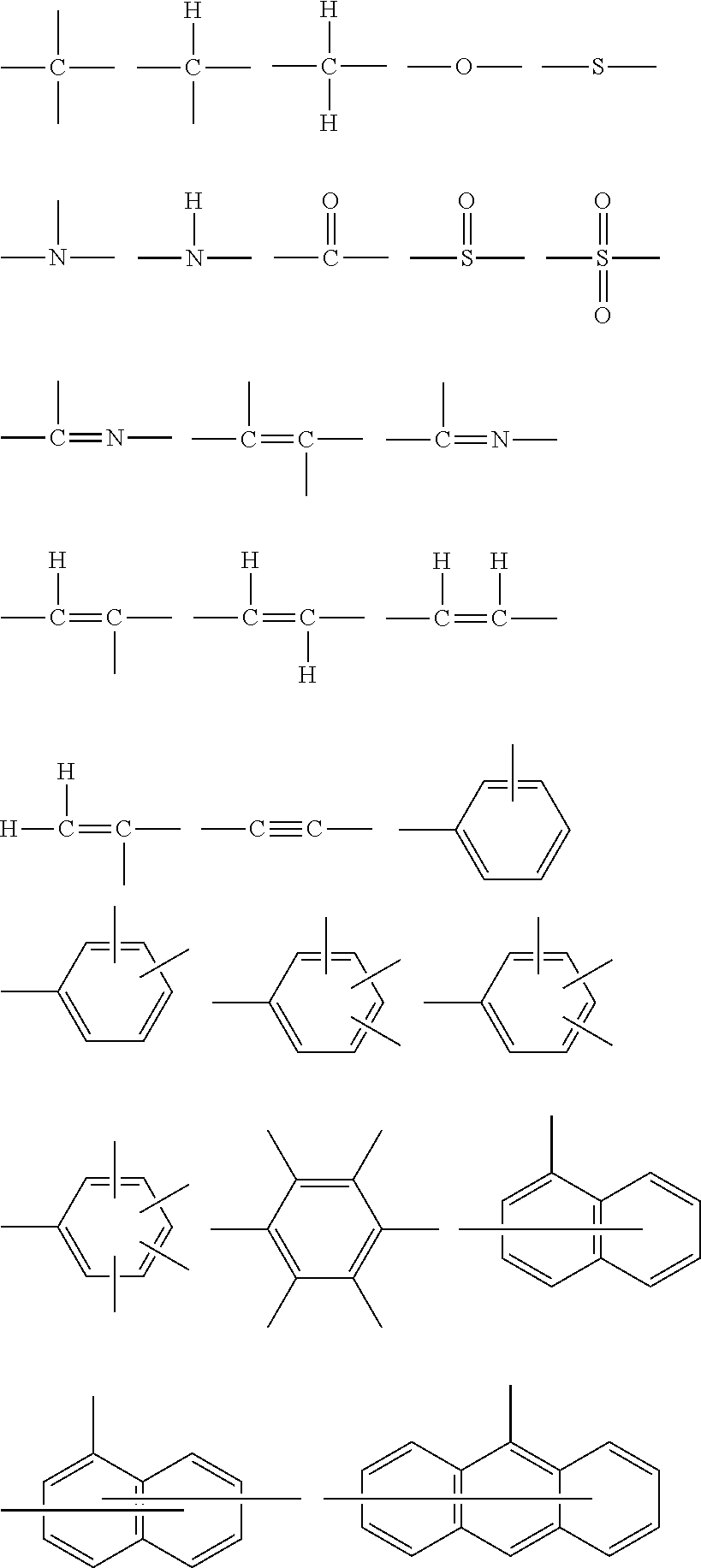Colorant-containing particles, colorant-containing particle dispersion, and polymer compound
a technology of colorant-containing particles and polymer compounds, which is applied in the field of colorant-containing particles, colorant-containing particle dispersion, and polymer compounds, can solve the problems of insufficient dispersion stability, inability to obtain sufficient dispersibility, and high initial viscosity of dispersed particles, so as to improve dispersion stability and the dispersed particle stability, the effect of easy synthesizing
- Summary
- Abstract
- Description
- Claims
- Application Information
AI Technical Summary
Benefits of technology
Problems solved by technology
Method used
Image
Examples
examples
[0216]The present invention is described below in greater detail using Examples. The materials, reagents, amounts, proportions, procedures, and other conditions used in the following Examples may be appropriately varied, provided that such changes do not depart from the gist of the present invention. Accordingly, the scope of the present invention should not be narrowly interpreted within the limits of the concrete examples described below.
[0217]In the following, “parts” and “%” are “parts by mass” and “mass %”, respectively, unless otherwise stated.
1. Synthesis Example
(1) Synthesis Examples C-1 to C-31
[0218]Polymer compounds C-1 to C-31 (first polymers) represented by formula (1) were synthesized by using the methods below.
Synthesis of Mercaptan Compound Represented by Formula (5)
[0219]First, chain transfer agents B-1 to B-7 (mercaptan compounds represented by the formula (5)) were synthesized by using the following methods.
synthesis example b-1
[0220]Dipentaerythritol hexakis(3-mercaptopropionate) [DPMP; Sakai Chemical Industry Co., Ltd.] (7.83 parts), and compound (A-1) having the adsorption moiety below and carbon-carbon double bonds (15.57 parts) were dissolved in dimethylformamide (93.60 parts), and the mixture was heated to 70° C. under a stream of nitrogen. The mixture was heated for 3 hours after adding 2,2′-azobis(2,4-dimethylvaleronitrile) [V-65, Wako Pure Chemical Industries, Ltd.] (0.06 parts). After adding additional V-65 (0.06 parts), a reaction was allowed at 70° C. for 3 hours under a stream of nitrogen. A 20% solution of the mercaptan compound (chain transfer agent B-1) below was obtained upon cooling the mixture to room temperature.
synthesis example b-2
[0221]A 20% solution of the mercaptan compound (chain transfer agent B-2) below was obtained in the same manner as in Synthesis Example B-1, except that the compound (A-1) having the adsorption moiety and carbon-carbon double bonds (15.57 parts), and dimethylformamide (93.60 parts) used in Synthesis Example B-1 were changed to compound (A-2) having an adsorption moiety and carbon-carbon double bonds (4.47 parts), and dimethylformamide (78.38 parts), respectively.
PUM
| Property | Measurement | Unit |
|---|---|---|
| Molecular weight | aaaaa | aaaaa |
Abstract
Description
Claims
Application Information
 Login to View More
Login to View More - R&D
- Intellectual Property
- Life Sciences
- Materials
- Tech Scout
- Unparalleled Data Quality
- Higher Quality Content
- 60% Fewer Hallucinations
Browse by: Latest US Patents, China's latest patents, Technical Efficacy Thesaurus, Application Domain, Technology Topic, Popular Technical Reports.
© 2025 PatSnap. All rights reserved.Legal|Privacy policy|Modern Slavery Act Transparency Statement|Sitemap|About US| Contact US: help@patsnap.com



